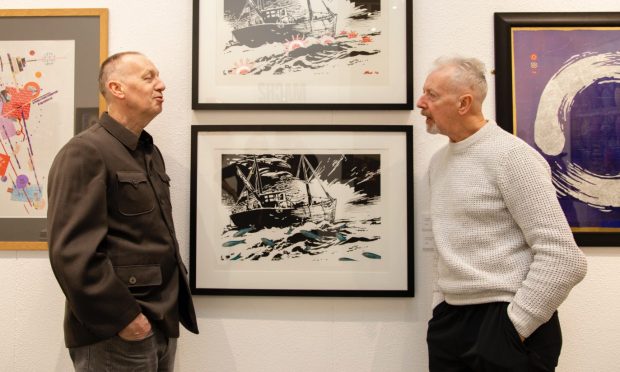A near 10-times estimate bid was required to acquire the scary-looking harpoon (pictured) at Andrew Smith & Sons’ auction in Hampshire on July 16.
The 19th century iron/steel whaling harpoon was marked ‘Harmony 1821’ and ‘R. Black G’ on the head of its 4ft-long shaft. The brig Harmony is recorded as sailing from Barra in 1821 with 350 Scottish settlers bound for Nova Scotia.
The harpoon was collected by the explorer Sir James Wordie, chairman of the Scott Polar Research Institute, 1937-1955, and thence passed by family descent to the vendor.
It was possibly acquired by Wordie when he served as geologist on the Endurance during the famous 1914-15 expedition to Antarctica with Ernest Shackleton.
According to polar histories, the Endurance left Buenos Aires on October 26, 1914, arriving in King Edward Cove, South Georgia on November 5.
The large island here, between 54 and 55 degrees south, provided a home for Shackleton for the next month whilst the vessel was re-provisioned. Perhaps it was at this moment that Wordie acquired the harpoon from one of the seven whaling stations located across South Georgia’s northern coast.
I wonder, then, if the harpoon made its way from Arctic to Antarctic on Dundee’s remarkable whaling expedition to the southern oceans in 1892, Discovery’s voyage of 1901 or Shackleton’s 1908 adventure on the Dundee-built Nimrod?
Whatever the case, the whalers in 1914 appear to have reported to Shackleton that the pack ice on the Weddell Sea would make a crossing both slow and dangerous.
Endurance duly entered the ice on December 7. By January 19, 1915 she was firmly entombed by the ice at 76 degrees, or ‘nipped’ as the Dundee whalermen put it.
Endurance was to drift randomly, without escaping the ice. Shackleton and his men abandoned her on October 27, taking to the 10-feet-thick ice. The party was finally able to launch their lifeboats on April 9. Shackleton’s safe arrival on Elephant Island and his subsequent small-boat journey to South Georgia on the James Caird has become one of the epic tales of survival.
The harpoon showed the expected areas of loss, rust, and metal deterioration or fatigue. A rare thing, nonetheless, it took £1850 against pre-sale hopes of £200-£300.










